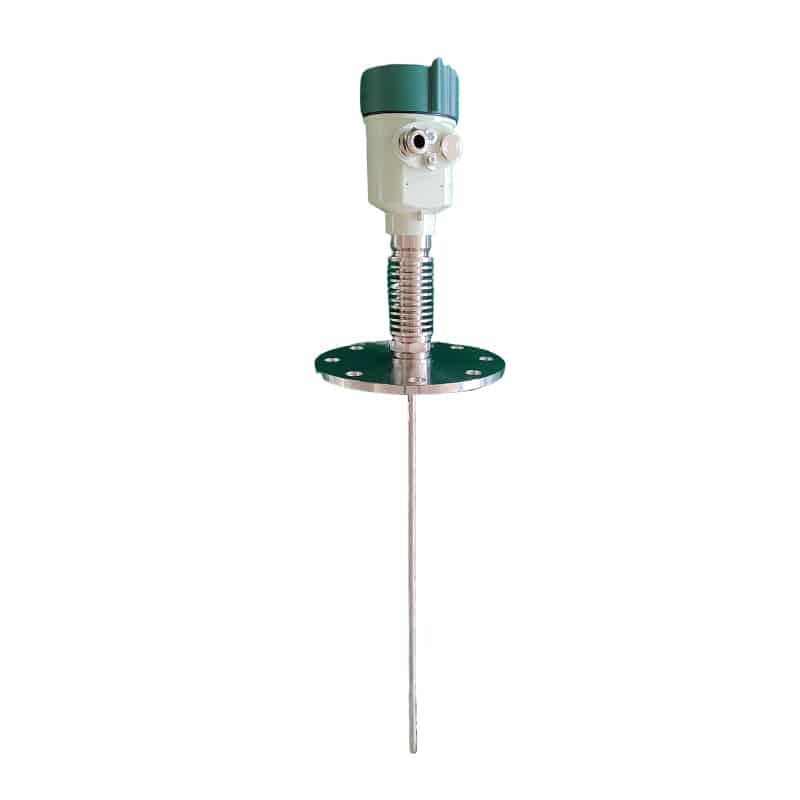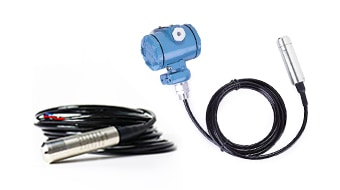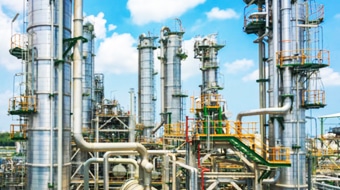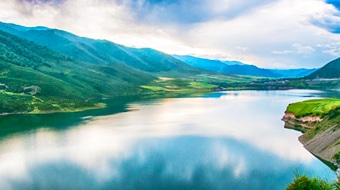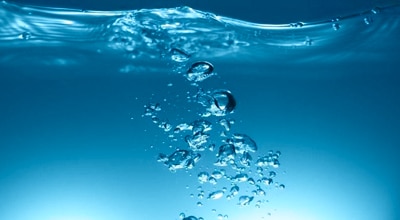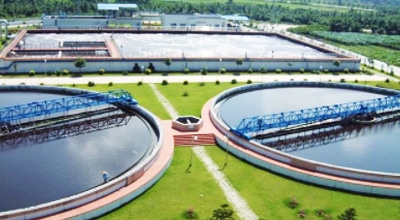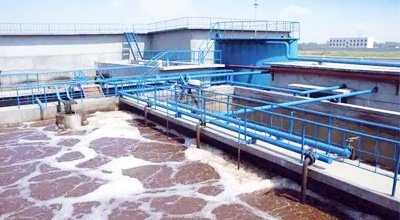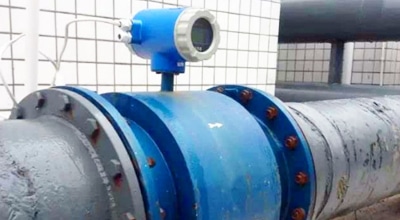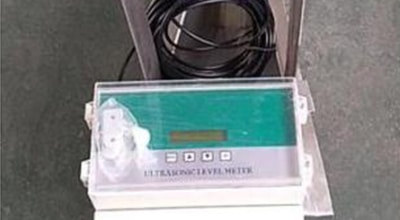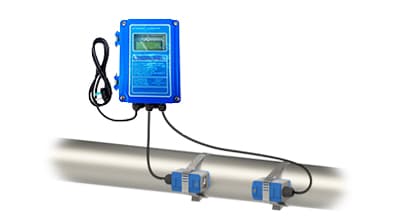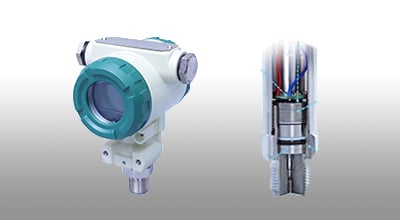Radar Level Transmitter
Radar level measurement can be perfectly suited for applications in all industries, both for measuring liquids and solids. Radar level transmitters are not only suitable for simple tanks, corrosive or aggressive media, but even for high-precision tank metering applications.
Apure is a leading manufacturer of radar level sensors, offering a wide range of models and options. Products range from guided wave radar level transmitters to non-contact radar level transmitters (both pulsed and FMCW). Transmitting frequencies range from 26 GHz to 81 GHz.
Working principle of radar level transmitter
There are two different principles of radar level meters.
Guided wave radar level transmitter
Guided wave radar level transmitter is based on the principle of time-domain reflection (TDR) as the basis of the radar level sensor, radar level meter electromagnetic pulse to the speed of light along the cable or probe propagation, when encountered on the surface of the medium to be measured, the radar level meter part of the pulse is reflected to form an echo and along the same path back to the pulse transmitting device, the transmitting device and the surface of the medium to be measured the distance between the pulse and the propagation time of the pulse proportional to the calculation of the height of the liquid level.
Non-contact radar level sensor
Non-contact radar level sensors are measuring instruments based on the time travel principle. The radar probe emits high frequency pulses and propagates them along the cable. When the pulses meet the material surface they are reflected back and received by the receiver inside the instrument and the distance signal is converted into a level signal.
Radar level sensor advantages and disadvantages
Advantages
- Radar level meter is mainly composed of electronic control unit and antenna, no moving parts, no mechanical wear and tear, compared with the mechanical parts of the level measuring instrument has a longer service life. Truly maintenance-free.
- Radar level meter can be used for most of the level measurement of liquid level, the microwave emitted can pass through the vacuum, no need for transmission medium, by the atmosphere, steam, volatile fog in the tank of the influence of small.
- Adopting non-contact measurement, it is not affected by physical characteristics such as density and concentration of liquid level in the tank. Large measuring range, strong corrosion resistance.
- Convenient installation, low failure rate, easy maintenance, high precision, high reliability and other advantages.
- Adopting digital and analog two output modes, it can be configured as single or multiple units according to the bus type, and can be easily connected with the upper monitoring computer.
- Low radiation rate of the instrument, basically no harm to the surrounding environment and personnel.
Disadvantages
- Compared with other liquid level measurement instruments, the price of radar level meter is higher
- Radar level meter can not measure the liquid level of metal, concrete and other materials made of containers
- The measurement range of radar level meter is limited by antenna size and process conditions.
Applications
Petrochemical industry
- Tank Level Measurement: Measure the level of various crude oil, refined oil, chemicals and other storage tanks to ensure the safe operation of storage tanks.
- Reaction kettle level measurement: monitor the level of reaction liquid in the reaction kettle to control the reaction process.
- Pipeline Level Measurement: Measure the liquid level in the pipeline to prevent the pipeline from overflowing or drying up.
Power industry
- Boiler water level measurement: monitor the boiler water level to ensure the safe operation of the boiler.
- Condensate tank level measurement: Measure the level of condensate tank to control the water supply.
- Coal storage bin level measurement: Measure the coal level in the coal storage bin to control the amount of coal supplied.
Food and beverage industry
- Fermentation tank level measurement: Monitor the level of culture medium in the fermentation tank to control the fermentation process.
- Liquid level measurement in storage tank: Measure the liquid level of various raw materials and finished products to ensure the continuity of the production process.
- Pipeline level measurement: Measure the level of materials in the pipeline to prevent blockage or overflow.
Pharmaceutical industry
- Reaction kettle level measurement: monitor the level of reaction liquid in the reaction kettle to control the reaction process.
- Pure water tank level measurement: Measure the level of pure water tank to ensure the supply of pure water.
- Filling line level measurement: monitor the level of liquid on the filling line to ensure product quality.
Water treatment industry
- Sewage tank level measurement: monitor the level of sewage tank, control the sewage treatment process.
- Clear pool level measurement: monitor the level of clear pool to ensure the safety of water supply.
- Sedimentation tank level measurement: monitor the level of sedimentation tank, control the sedimentation process.
Other industries
- Paper industry: Measure the liquid level of pulp pool and white water tank.
- Metallurgical industry: Measure the liquid level in blast furnace, converter and other equipments.
- Environmental protection industry: Measure the liquid level of sludge tank and waste water tank.
Selection considerations
- Media characteristics: dielectric constant, conductivity and other characteristics of the medium will affect the measurement accuracy.
- Container material: container material will affect the reflection of electromagnetic waves, need to choose the appropriate antenna.
- Measuring range: According to the measuring range to choose the appropriate instrument.
- Environmental conditions: Consider the temperature, pressure, corrosion and other environmental factors.
Frequently Asked Questions
- Interference sources: Metal piping, stirrers, etc. can cause interference and require shielding measures.
- Foam and vapors: Foam and vapors can affect the measurement accuracy, so you need to choose an instrument with strong anti-interference ability.
- Dust: Dust affects the cleanliness of the antenna and needs to be cleaned regularly.
Radar level transmitter calibration
Firstly, the calibration of radar level transmitters needs to be carried out in real industrial environments, because environmental factors such as temperature, pressure, medium, etc. at industrial sites can affect the measurement results of radar level meters. Secondly, calibration of radar level meters requires the use of standardized equipment, such as standard liquid level meters or standard measuring drums. Before calibration, it is necessary to check whether the installation position and angle of the radar level meter are correct, and whether the antenna of the radar level meter covers the liquid surface.
Next are the specific steps for commissioning calibration. First, adjust the liquid level in the standard liquid level meter or measuring drum to a predetermined height and record the standard height value. Then, the radar level meter is aligned with the standard liquid level meter or measuring bucket for measurement, the measured value is recorded, and the standard height value is compared and analyzed. If the deviation between the measured value and the standard height value is large, it is necessary to recalibrate or adjust the installation position or angle of the radar level meter. Finally, through several measurements, comparative analysis and adjustments, accurate and reliable radar level meter weight measurement results are obtained.

